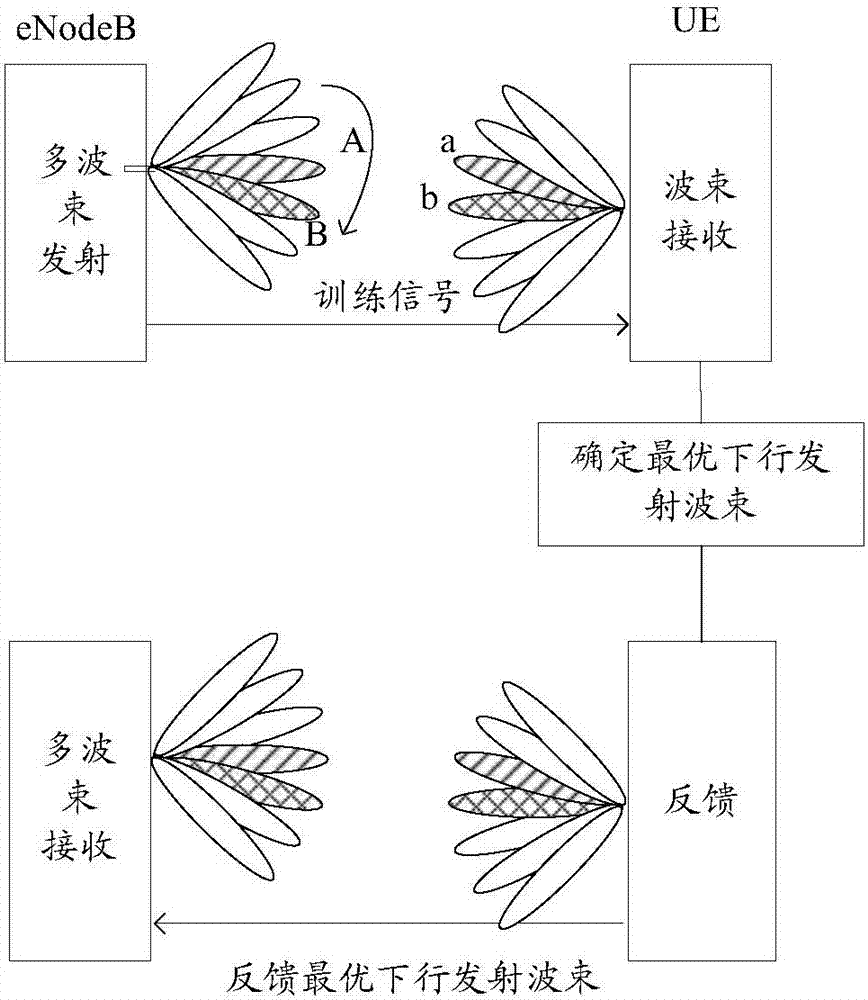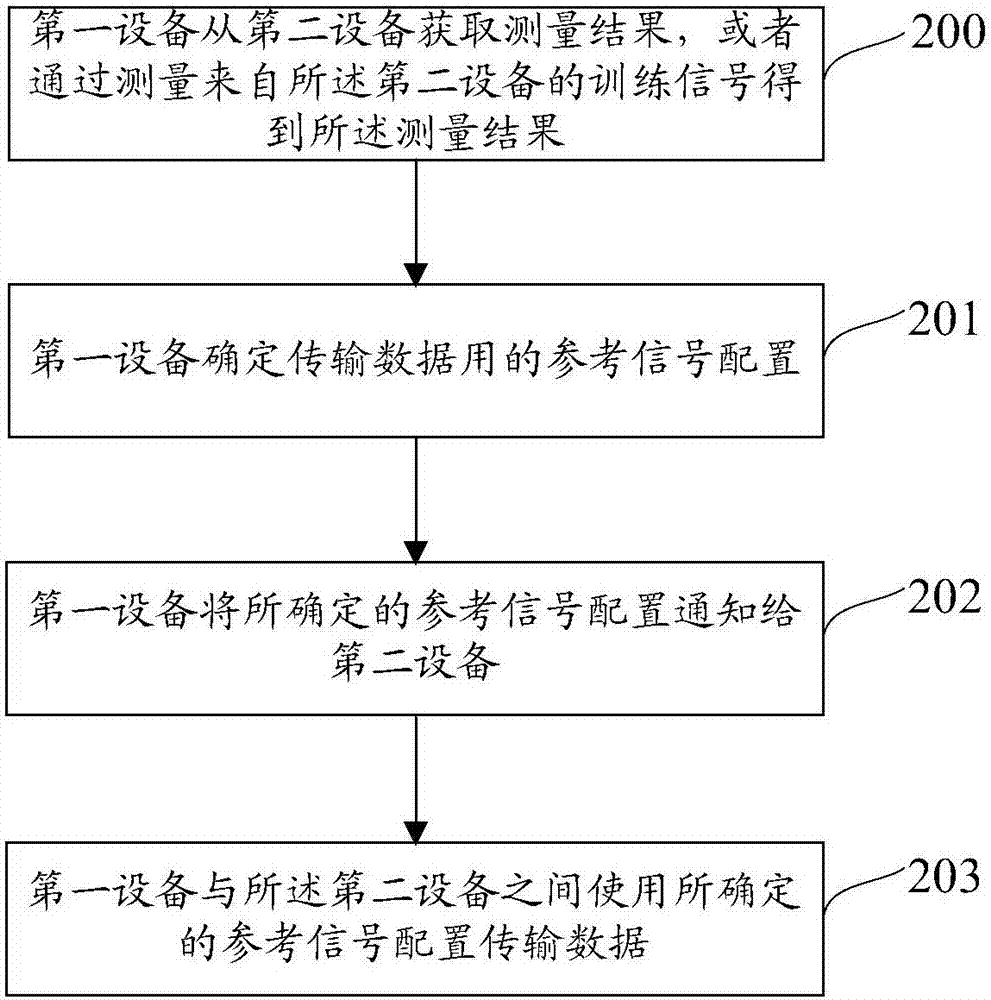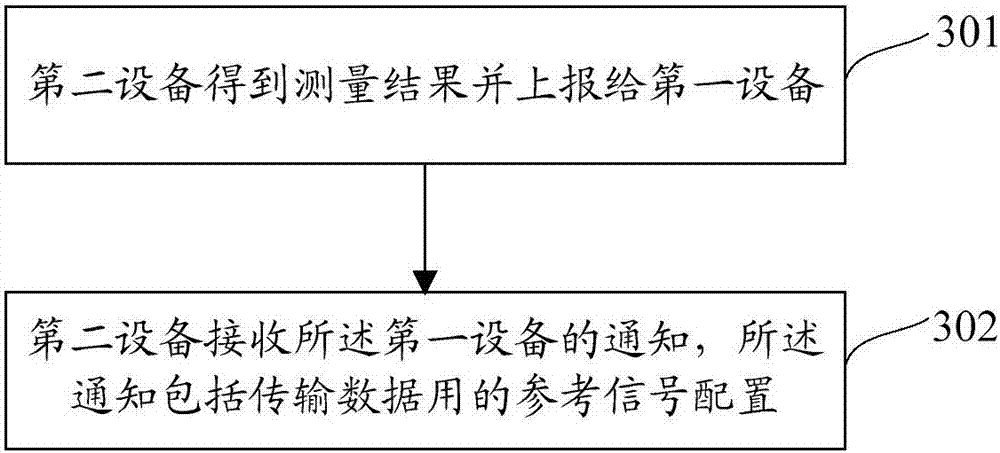Method and device for data transmission
A technology for transmitting data and sending data, which is applied in the field of data transmission, can solve problems such as no choice, and achieve the effect of reasonable utilization
- Summary
- Abstract
- Description
- Claims
- Application Information
AI Technical Summary
Problems solved by technology
Method used
Image
Examples
Embodiment 1
[0106] In this embodiment, the base station notifies the downlink optimized transmission beam to the terminal, so that the terminal can know the change of the transmission beam of the base station in time. Such as Figure 5 As shown, the method flow of this embodiment may include:
[0107] Step 501, the base station (eNodeB) transmits a training signal in each downlink transmission beam direction, and the training signal can be a synchronization signal, a discovery signal, a common pilot signal, etc.;
[0108] Step 502, the terminal (UE) determines the preferred beam set and feeds it back to the base station;
[0109] Wherein, the terminal receives the training signal, measures the training signal, selects one or several downlink transmission beams with the best reception quality and better according to the measurement results to form a preferred beam set, and feeds back the preferred beam set to the base station ; The best reception quality is the best reception quality, an...
Embodiment 2
[0125] Similar to downlink beam training, the terminal's uplink transmit beam also needs to be trained. In this embodiment, the situation that the base station notifies the uplink optimized transmit beam will be described in detail. Such as Figure 6 As shown, the method flow of this embodiment may include:
[0126] Step 601, the terminal transmits a training signal in each uplink transmit beam direction, and the training signal may be a random access signal, a channel sounding reference signal (Sounding Reference Signal, SRS), an uplink demodulation reference signal, etc.;
[0127] Step 602, the base station measures the training signal and obtains a preferred beam set;
[0128] Step 603, the base station selects an optimized uplink transmission beam for data transmission in the preferred beam set according to the load balancing between beams, interference suppression, and beam prediction algorithm under moving conditions, etc., and notifies the terminal, and the terminal r...
Embodiment 3
[0138] In this embodiment, the situation that the terminal notifies the uplink optimized transmit beam will be described in detail. Such as Figure 7 As shown, the method flow of this embodiment may include:
[0139] Step 701, the terminal transmits a training signal in each uplink transmission beam direction, and the training signal may be a random access signal, SRS, uplink demodulation reference signal, etc.;
[0140] Step 702, the base station measures and obtains the optimal uplink transmit beam set;
[0141] Step 703, the base station feeds back the optimal uplink transmit beam set to the terminal;
[0142] Step 704, the terminal selects an optimized uplink transmit beam for data transmission from the set of optimal uplink transmit beams, and notifies the base station of the reference signal configuration of the uplink transmit beam through uplink signaling;
[0143] In special cases, the terminal may also select a non-transmission beam identifier or a beam in the ind...
PUM
 Login to View More
Login to View More Abstract
Description
Claims
Application Information
 Login to View More
Login to View More - R&D
- Intellectual Property
- Life Sciences
- Materials
- Tech Scout
- Unparalleled Data Quality
- Higher Quality Content
- 60% Fewer Hallucinations
Browse by: Latest US Patents, China's latest patents, Technical Efficacy Thesaurus, Application Domain, Technology Topic, Popular Technical Reports.
© 2025 PatSnap. All rights reserved.Legal|Privacy policy|Modern Slavery Act Transparency Statement|Sitemap|About US| Contact US: help@patsnap.com



